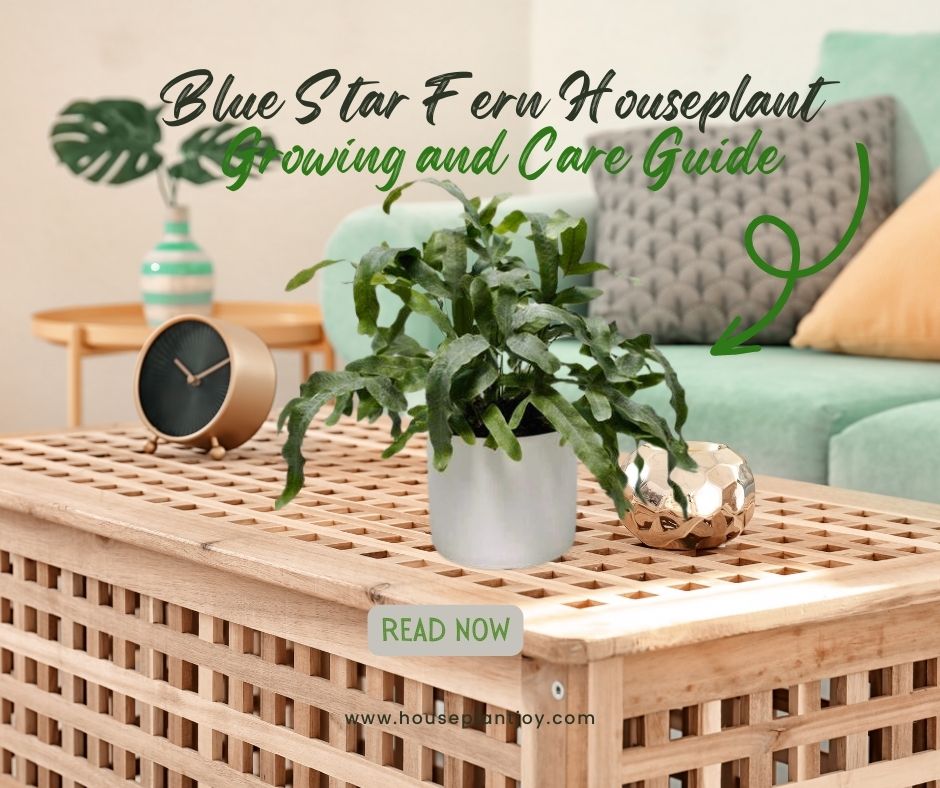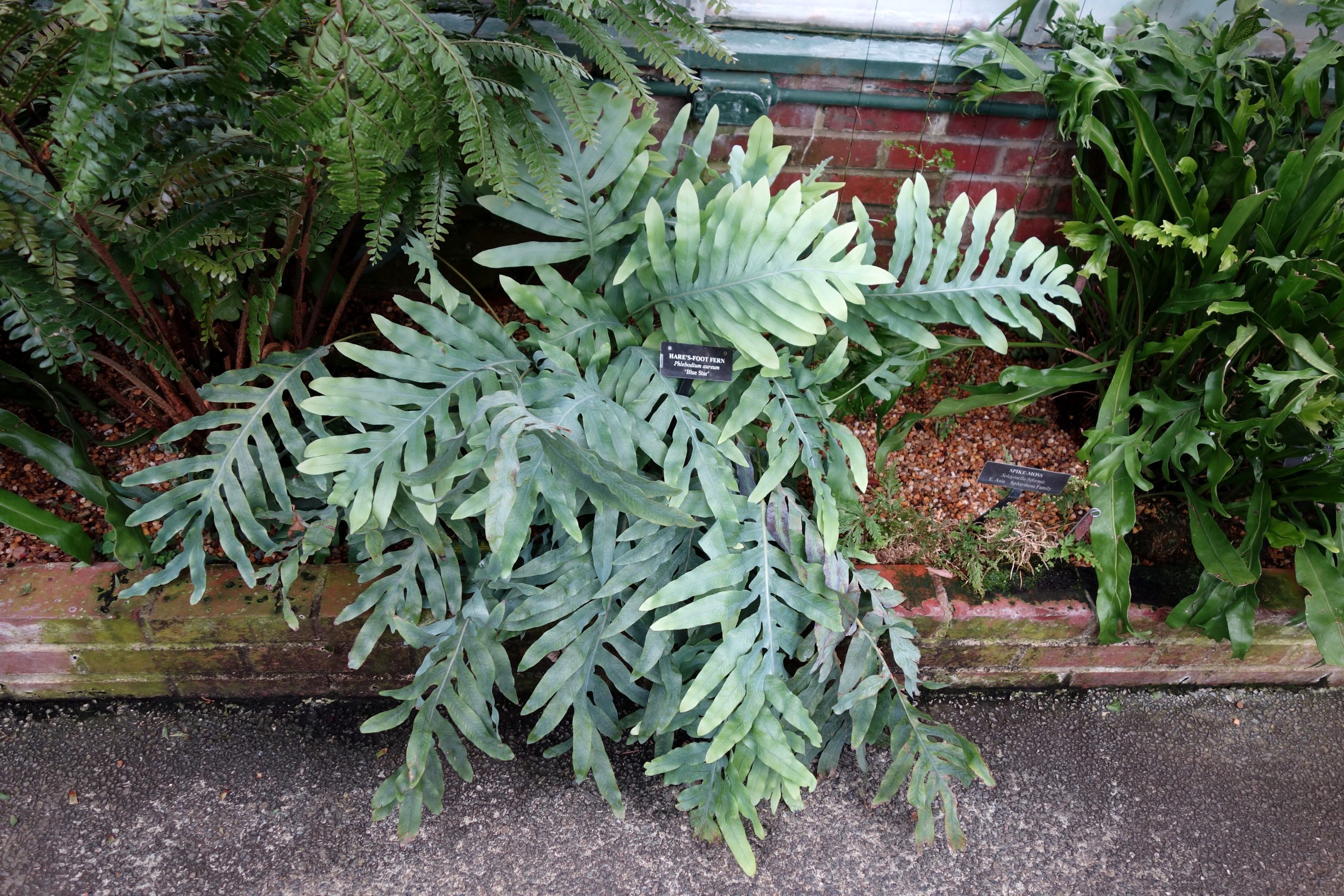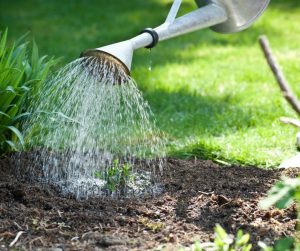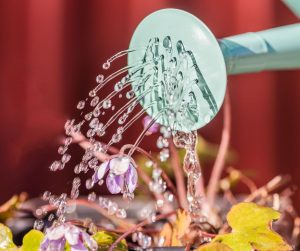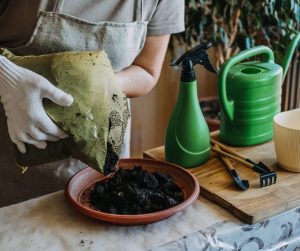HousePlantJoy is supported by our audience. When you purchase through one of our links, we may earn a small affiliate commission. As an Amazon Associate I earn from qualifying purchases. Your cost is not affected.
==================
Hey plant friends! Have you ever brought a new plant home? It’s pretty exciting, isn’t it? Every plant has its own needs, and it’s like going on an adventure to find out what those needs are. Today, we’re going on an adventure with the Blue Star Fern houseplant.
Meet the Blue Star Fern
This Blue Star Fern is a really special houseplant. It can turn your home into a cool, green space. Whether you’re new to plants or you’ve been taking care of them for years, the Blue Star Fern is a great plant to have.
So, grab your favorite drink, sit back and let’s learn all about the Blue Star Fern together. By the end of this guide, you’ll know all about this awesome plant and how to take care of your own Blue Star Fern houseplant.
Ready? Enjoy reading!
What is a Blue Star Fern?
Are you familiar with the Blue Star Fern? This beauty is also known as Phlebodium Aureum. It is quickly becoming a favorite amongst plant fans. Why, you ask? Well, because this houseplant is super easy to look after! It’s a plant with deep roots in North and South America and is part of the fantastic oak family.
Let’s dig a little deeper into the life of a Blue Star Fern. This is no ordinary fern—it’s an epiphytic fern. That means it’s a plant that grows on other plants, like a friendly hitchhiker! And it’s not being rude or anything. It just gets its food and drinks from the stuff around it.
Daderot, CC0, via Wikimedia Commons
Now, what makes the Blue Star Fern houseplant truly shine? It’s got to be those long, graceful fronds. They have this unique green-blue color that can make any space feel a bit more fancy. Best of all, this fern isn’t a diva. It only demands sunlight and can even do well in lower-light conditions. That makes it a top pick for newbie plant parents and seasoned green thumbs.
Ready to learn more? Stick around! We’ll dive into everything you need to know about Blue Star Fern. That includes watering tips, soil info, light requirements, and even how to make more Blue Star Ferns through propagation!
Where Does It Come From?
The Blue Star Fern, which some people call Phlebodium Aureum, is a fern that initially comes from North and South America. It’s cool because it grows on other plants and gets its food and water from the stuff that builds up around it. It’s part of the Polypodiaceae family, which makes it a close cousin to the Polypodium Fern.
What Makes It Special?
The Blue Star Fern is a fantastic houseplant with long leaves with a neat green-blue color. It’s easy to take care of and can grow in places that don’t get a lot of light. This makes it an excellent plant for people new to plants and those who have loved them for years. Here’s what makes it stand out:
- The Blue Star Fern has these cool blue-green leaves that can brighten any room.
- It has fuzzy parts where new leaves grow. You can take these parts off and make new plants pretty easily if you want.
- The fern can get up to two feet big when fully grown. It’s also pretty easy to take care of, which is excellent for busy people who don’t have much time for plants.
- The Blue Star Fern needs water about once or twice a week, about 1-2 inches each time. It likes soil that drains well, like perlite and vermiculite. This soil type stays a bit wet but doesn’t get too soggy.
Planting the Blue Star Fern
When planting the Blue Star Fern, it is essential to consider the type of soil and pot size. This is to ensure optimal growth and health.
-
Suitable Soil Type
The Blue Star Fern thrives in well-draining soil rich in organic matter. A good soil mix for this fern should include peat moss, perlite, and vermiculite. These components will help to retain moisture while also allowing for proper drainage.
It is essential to avoid using heavy or compacted soil that can lead to waterlogging and root rot. Additionally, the soil should be alkaline and acidic. This can affect the fern’s ability to absorb nutrients.
-
Ideal Pot Size
When selecting a pot for the Blue Star Fern, choosing one slightly bigger than the plant’s root ball is essential. A pot that is too large can lead to waterlogging and root rot, while a pot that is too small can stunt the fern’s growth.
A good rule of thumb is to select a pot that is 1-2 inches broader in diameter than the plant’s current pot. The pot should also have drainage holes to allow excess water to drain out.
Blue Star Fern Care
Taking care of your Blue Star Fern is important to ensure that it grows healthy and strong. Here are the key things to keep in mind when caring for your Blue Star Fern.
-
Watering Requirements
Blue Star Ferns require moderate watering. It is important to refrain from over-watering as this can lead to root rot. Water your fern when the top 2 inches of soil are dry. You can test the soil by putting your finger into the soil to see if it feels dry.
-
Lighting Conditions
Blue Star Ferns prefer indirect light. They can tolerate low light, but they will not grow as well. Don’t put it in direct sunlight, as this can burn the leaves. Place your fern in a well-lit area away from direct light.
-
Temperature and Humidity Needs
Blue Star Ferns prefer a temperature between 54-78°F (12-26°C). They also require high humidity levels. You can increase humidity by misting your fern with water or placing a humidifier nearby. Running a humidifier or placing your Blue Star Fern in a group of other plants can be helpful.
It is important to note that Blue Star Ferns are epiphytes. This means they grow on trees in their natural habitat. They do not grow in soil like other ferns. As a result, they require a well-draining soil mix consisting of vermiculite and perlite. Avoid potting soil, which is too dense for Blue Star Ferns.
Things to Watch Out For
Taking care of Blue Star Ferns is pretty straightforward. But like all houseplants, sometimes they can have problems. Here are some things you might run into when taking care of your Blue Star Fern:
-
Watch Out for Bugs
Blue Star Ferns can sometimes get bugs that often bother houseplants. These include spider mites, mealybugs, and scale insects. These bugs can hurt the leaves and stems of your plant. They make them change color, wilt, and even die if you don’t do anything about it.
Ensure your Blue Star Fern is happy and well cared for to keep bugs away. Check your plant often to see any signs of bugs, like webs, sticky stuff, or tiny insects. If you see bugs, move your plant away from the others and use a bug spray that’s safe for plants. Make sure you follow the instructions on the bottle.
-
Be Careful with Water
Blue Star Ferns can also get sick from plant diseases like root rot and southern blight. These diseases can happen if you give your plant too much water. The water can’t drain away. If your plant gets a fungus, these diseases can make your plant wilt, turn yellow, and lose leaves.
To keep your plant from getting sick, ensure your Blue Star Fern is in soil that drains well. Plus, let the soil dry out a bit before watering again. Try not to get water on the leaves and stems of your plant because that can help the fungus grow. If you see signs of disease, move your plant away from the others and use a plant medicine called a fungicide. Make sure you follow the instructions on the bottle.
Taking good care of your Blue Star Fern can grow well and make your home look nicer. By knowing what problems to look out for and how to stop them, your plant can be healthy and look great for many years.
Propagation Techniques
Propagating Blue Star Ferns is a simple process; you can do it easily at home. There are two main techniques for propagating Blue Star Ferns. These are division and fragment propagation.
-
Division Propagation
Division propagation involves separating the Blue Star Fern into smaller plants. To do this, you must remove the plant from its pot and split the roots into two or more sections. Each section should have a good amount of roots and leaves. After separating the sections, replant them in separate pots with fresh soil.
-
Fragment Propagation
Fragment propagation involves taking a small section of the Blue Star Fern and planting it in soil. To do this, take a small area of the plant, ensuring it has a few leaves and roots. Plant the section in a pot with fresh soil and maintain the soil moist until the plant has established itself.
You can do division and fragment propagation any time of the year. But it is best to do it in the spring or summer when the plant is actively growing. Blue Star Ferns are low-maintenance plants. So propagating them is a great way to expand your collection or share them with friends and family.
Why You’ll Love the Blue Star Fern Houseplant
Blue Star Ferns are a favorite houseplant for many people, and here’s why. These are some of the cool things about having a Blue Star Fern in your house:
-
Easy Peasy
Blue Star Ferns are super easy to look after. They like places that don’t get much light and wet soil. They don’t need to be trimmed a lot, so they’re perfect if you want a plant that doesn’t need much fuss.
-
Clean Air
Like many other plants, Blue Star Ferns can help clean the air. They can eliminate bad stuff in the air, like formaldehyde, benzene, and trichloroethylene. So they’re a great choice if you want cleaner air in your house.
-
Pretty to Look At
Blue Star Ferns have these cool blue-green leaves that look nice. They can brighten up any room and make it feel calm and natural.
-
Helps with Humidity
Blue Star Ferns come from very humid places. So, having a Blue Star Fern in your house can help keep the humidity right and make your home feel more comfy.
-
Safe for Pets
Blue Star Ferns are safe for pets. So they’re a great choice if you have pets and want to make your house greener without worrying about your pets getting sick.
Wrapping It Up
And there you go! We’ve learned much about the Blue Star Fern houseplant, an excellent indoor plant. It’s easy to look after, safe for pets, cleans the air, and brings a nice pop of color to any room. Plus, it can make your home feel more like a tropical forest.
So, if you’re new to plants or have loved them for a long time, the Blue Star Fern is a great plant. Remember, each plant is different and needs different things. But with some love and the tips we’ve shared today, your Blue Star Fern houseplant can grow well. It will make you happy for a long time.
So, that’s all about the Blue Star Fern. We hope this guide was helpful. Happy planting, folks! Remember, in the fun world of plants, each day is a new chance to learn something new.
FAQs
How do I properly water a Blue Star fern?
Water your Blue Star fern regularly, about 1-2 inches per week. Make sure the soil is moist but not waterlogged. Overwatering the plant can cause root rot and other issues.
What kind of soil does a Blue Star fern need?
Blue Star ferns grow best in well-draining soil that stays moist but not waterlogged. Use a mix of perlite and vermiculite to ensure good drainage.
Is a Blue Star fern toxic to cats?
Here is a fact from the American Society for the Prevention of Cruelty to Animals. Blue Star ferns are non-toxic to cats and dogs.
How can I propagate a Blue Star fern?
You can propagate Blue Star ferns through division or via fragments. To divide the plant, carefully separate the root ball into smaller sections. Then, plant each section in its own pot. To propagate via fragments, take a healthy frond with a piece of rhizome attached. You should plant it in a pot with moist soil.
What are common problems with Blue Star ferns, and how can I fix them?
Common problems with Blue Star ferns include root rot, mildew, and Southern blight. To prevent these issues, make sure the soil is well-draining and not waterlogged. Avoid overwatering and make sure the plant has good air circulation. What if you notice any signs of disease or pests? Treat them promptly with appropriate measures.
Are Blue Star ferns easy to care for?
Blue Star ferns are low-maintenance and generally easy to care for. They prefer bright, indirect light. Moderate humidity is also a good thing. Keep the soil moist but not waterlogged, and make sure the plant has good air circulation. With proper care, your Blue Star fern should thrive and add beauty to your home.
Dive into the Enchanting World of Ferns!
Discover the most fascinating ferns and houseplants, including the Blue Star Fern houseplant! Join us on Facebook, Instagram, and Twitter for beautiful photos, plant care tips, and a community that celebrates the joy of indoor gardening.
Facebook: https://www.facebook.com/houseplantjoyblog
Instagram: http://instagram.com/houseplantjoy20
Twitter: https://twitter.com/HouseplantJoy
Let’s nurture our green spaces together!
Read More
More Interesting Links

